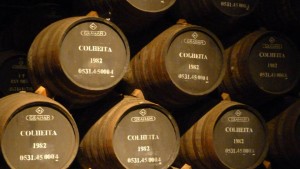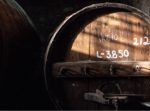Graham’s
One of the oldest and most beautiful Port Company
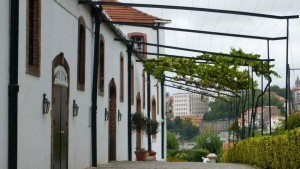 The history of the Graham’s House begins in 1820 with the Scottish brothers William and James Graham who engaged in the import and export of textile, wool, Porto wines between Portugal and the United Kingdom. In 1890 they expanded their trading activity and took a real turning point in the Graham House’s also becoming producer with the purchase of Quinta dos Malvedos which is one of the oldest in the Upper Douro. The same year they built the iconic cellars of Graham’s located in Gaia (Porto).
The history of the Graham’s House begins in 1820 with the Scottish brothers William and James Graham who engaged in the import and export of textile, wool, Porto wines between Portugal and the United Kingdom. In 1890 they expanded their trading activity and took a real turning point in the Graham House’s also becoming producer with the purchase of Quinta dos Malvedos which is one of the oldest in the Upper Douro. The same year they built the iconic cellars of Graham’s located in Gaia (Porto).
In 1882, the young Scot Andrew James Symington arrived in Portugal, he met and married Beatrice Atkinson daughter of a Portuguese wine producer in Porto and an English mother whose family was already an actor in the wine trade of Porto (Walter Maynard house). With talent for business Andrew James Symington made successful business quickly. A few years later (1905) he took stakes in a few large houses whose Porto Warre & Co or the Dow House. In 1970 his descendants bought the Graham’s house the descendants of the founders William and James Graham’s.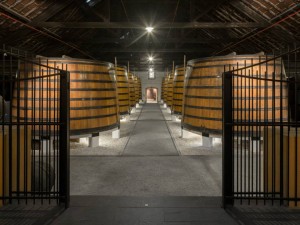
Today, after 14 generations the Graham’s house even though it no longer belongs to the founding family remains a 100% family estate. It is now known to be one of the most stable homes qualitatively each year (according to Robert Parker) and featuring one of the largest stock of old wines of Porto.
Note that the Symington family has specialized in so-called “fortified wines” but not only in Port wines. Indeed in 1989 the Symington acquired the Blandy, producing famous Madeira wine house which also has a family home tradition. The same year they also made the acquisition of one of the finest properties of the Douro, the Quinta do Vesuvio.
Where does the name of the Quinta do Vesuvio owned by the Graham’s house come from ?
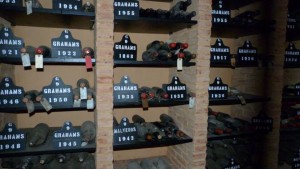 “The name was given by the owner at the time. He was returning from a trip in the area of Vesuvius in Italy and find the geography here was pretty good and that is how the name Vesuvio was found.”
“The name was given by the owner at the time. He was returning from a trip in the area of Vesuvius in Italy and find the geography here was pretty good and that is how the name Vesuvio was found.”
What differentiates your port wines?
“What is important is to use old wooden barrels instead of a large wooded as a contribution which blends harmoniously with the fruit. The Graham’s port wines are going to be more powerful, more fruity, more elegant and dense. The Warre port wine are drier, more austere and Dow’s port wines are most minerals.”
Some features:
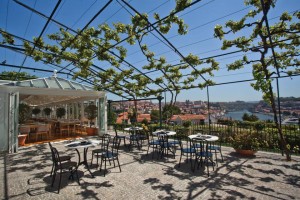 Product brands: Graham’s (Porto), Dow’s (Porto), Cockburn’s (Porto), Quinta do Vesuvio (Porto), Warre’s (Porto), Gould Campbell (Porto), Smith Woodhouse (Porto), Quinta de Roriz (Porto) , Chryseia (Douro Doc) Altano (Douro Doc), Blandy’s (Madeira wine), Cossart Gordon (Madeira wine), Leacock’s (Madeira wine), Miles (Madeira wine)
Product brands: Graham’s (Porto), Dow’s (Porto), Cockburn’s (Porto), Quinta do Vesuvio (Porto), Warre’s (Porto), Gould Campbell (Porto), Smith Woodhouse (Porto), Quinta de Roriz (Porto) , Chryseia (Douro Doc) Altano (Douro Doc), Blandy’s (Madeira wine), Cossart Gordon (Madeira wine), Leacock’s (Madeira wine), Miles (Madeira wine)- In sustainabke agriculture (3 treatment per year)
- Terraces stone handmade
- A portion of grapes were crushed with feet, another portion (majority) in “lagares” using mechanical silicone feet faithfully reproducing the human gesture
- Has 25 Quintas (properties) with a total of 1769 hectares, 940 hectares of vineyards
- Approximately 75% of the grapes used come from their properties (Quintas)
- Has its own cooperage
The house produces a Graham’s Porto called “Six grapes” which means “six varieties” in French. This name is a nod to the history of Porto since a few years the number of “grapes” was an indicator of quality as today’s stars for restaurants.
Thanks to the Graham’s team for the hospitality.
Graham’s Porto
Vila Nova de Gaia, Portugal
Tel: +351 223 776 484 / 485

